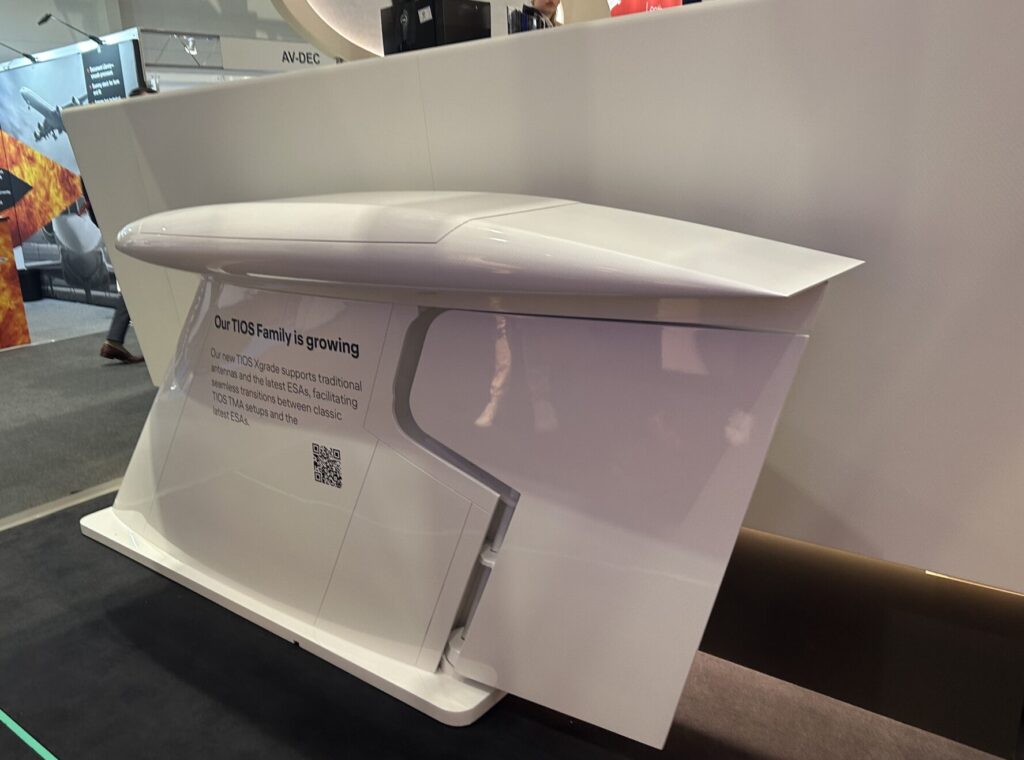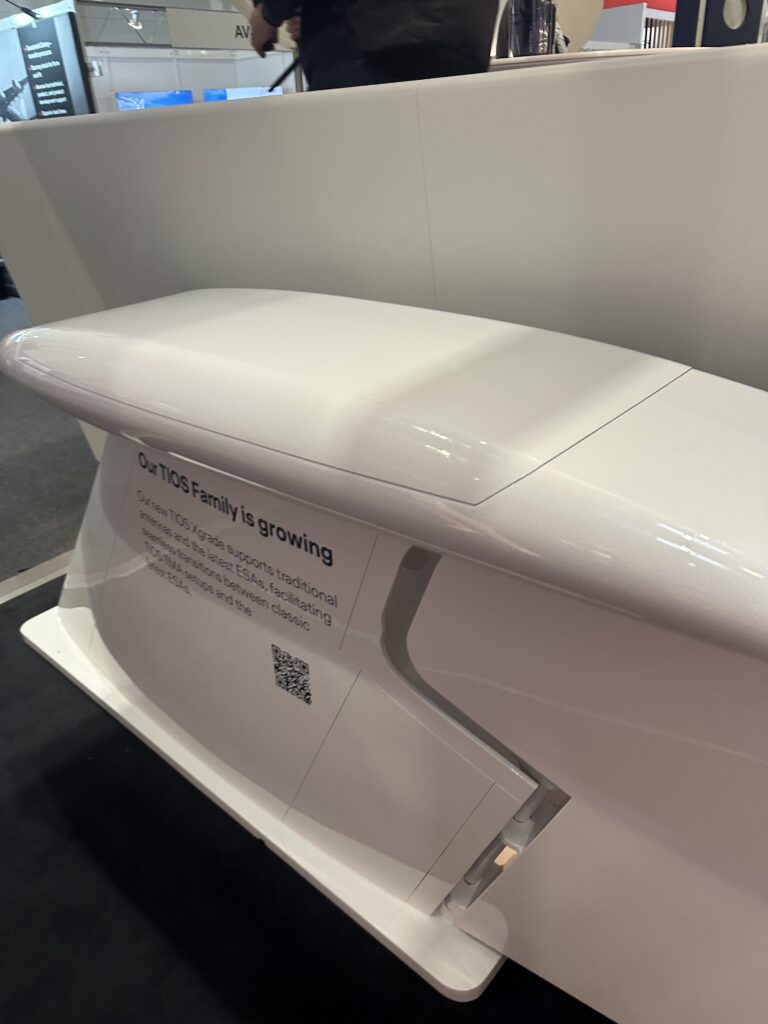Maintenance repair and overhaul giant Lufthansa Technik has a long history of fitting inflight connectivity systems to commercial and business aircraft. More than 20 years ago, it became the first company to integrate Boeing’s then-relevant Connexion Ku-band geostationary (GEO)-based system atop the fuselage of an Airbus jet. IFC installation projects for Panasonic Avionics, Viasat and other aero ISPs and integrators ensued.
But as broadband Low Earth Orbit (LEO) satellite services enter the aviation market, and with them new electronically steerable antenna (ESA) architectures, Lufthansa Technik is moving with the times, and confirms it is now supporting the equipage of new LEO-only and multi-orbit LEO/GEO solutions to VIP narrowbody and widebody aircraft.
To facilitate some of its planned work on VIP narrowbodies, and with an eye on also supporting commercial airlines, Lufthansa Technik (LHT) has modified its unique TIOS-branded radome and structural integration unit — which is designed to be seamlessly mounted on the vertical stabilizer of Boeing Business Jets and other 737 variants — to accommodate a LEO ESA in an aerodynamic package.
The new TIOS package would see a flat-panel ESA replace the more traditional tail-mount antennas housed within the streamlined unit. Image: Lufthansa Technik
An optional forward-looking HD camera can also be integrated into the package. To that end, Lufthansa Technik recently collaborated with Satcom Direct (now Gogo) and IDAIR to combine TIOS with a Gogo LEO-only ESA and an integrated content delivery system; their innovation was shortlisted for a Crystal Cabin Award.
Having observed that ESAs can provide enough throughput to support many passengers, and given the excitement for broadband, low-latency LEO satcom across civil aviation, Lufthansa Technik sees an opportunity to bring TIOS-styled radome solutions to commercial airlines, Lufthansa Technik product manager Bea Rehberg revealed to Runway Girl Network at the Aircraft Interiors Expo in Hamburg, where the firm’s new ‘TIOS ESA for LEO networks’ unit for the BBJ was on display.
“Before, with the old-fashioned tail-amount antennas, dish antennas, their throughput was always not enough for a large group of passengers. But now, with this antenna, with the LEO network, it will be surely working for everybody needing connectivity in the aircraft. So, we are now targeting airlines as well,” she said.
The beauty of using TIOS mounted on the vertical stabilizer of the Boeing 737, noted Rehberg, is it’s almost invisible. Compared to fuselage-mounted antennas, it has far less weight and drag, which saves on fuel and CO2, and ergo, is a more sustainable solution.
But for airlines that are eager to make a bandwidth play, Rehberg suggested to RGN that the ‘TIOS ESA for LEO networks’ could even be paired with fuselage-mounted antennas. It’s a fascinating proposition, especially given that we might someday see multiple IFC providers powering broadband connectivity on a single aircraft.
Lufthansa Technik is working with aero ISPs and ESA-makers that support satcom services via here-and-now Ku-band LEO constellations, including Eutelsat OneWeb LEO (Gogo’s chosen service in business aviation) and Starlink, should customers request it.
But when Ka-band LEO satcom is on offer, via Amazon’s Project Kuiper and Telesat Lightspeed, Lufthansa Technik fully anticipates supporting Ka- and perhaps ultimately hybrid Ku-Ka-powered inflight connectivity, Rehberg said. It expects to launch the TIOS ESA for LEO networks in 2027.
More broadly, the MRO provider is preparing to provide IFC installation and certification work to business aircraft operators and airlines as they seek to equip their aircraft with new LEO- and multi-orbit LEO/GEO offerings.
“We are very close with new developments, and new technologies which are upcoming. And now the exciting stuff is the LEO connectivity. So, we see a big change in the market and a very, very fast change. There are a lot of new players coming into the market,” noted Lufthansa Technik director connectivity & data acquisition solutions Markus Staar.
“We are in good discussion with cutting-edge, innovative companies.”
As new hybrid antenna architectures enter the fray, such as the ThinAir Plus mix-and-match offering that pairs a ThinKom VICTS antenna with a LEO-only electronically steerable antenna (ESA), Lufthansa Technik is “definitely” eager to facilitate installations, Staar told RGN.
“First of all, there is more than one LEO operator in the market. So, we have Eutelsat OneWeb; Amazon, Kuiper will come; Telesat will come; IRIS² will come in Europe. So, there is a lot on the horizon, and especially for the airline industry, I guess it’s getting more important to have a multi-orbit system on board. It gives just more flexibility,” he said.
In highly populated areas, where LEO bandwidth is lower, “then you can switch over to GEO and secure a good network connection for your passengers.”
Related Articles:
Featured image credited to Lufthansa Technik





